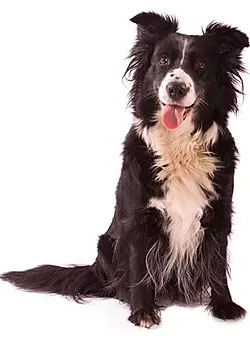One of the most annoying problems faced by pet owners is the appearance of small areas of dead grass caused by a dog’s caustic urine. Although we enjoy our pets immensely, many of them are banished to either a small corner fenced-run or kept inside. The easy answer to this problem is to train the dog to do his business in a specified area of the yard. The answer is easy but the training process is slightly more complicated.

One solution which appeals to most owners is to allow the dog to kill one particular area of the grass and forget about it; this is probably satisfactory for people who have a large property. Another approach, especially for male dogs who like to lift their leg, is to set aside a small square of gravel with a post in the center. These areas can be quite attractive conversation pieces using a tree stump or an imitation fire hydrant as the central post. A third alternative is to train the dog to urinate in the soil under a low-lying tree or bush. No matter what the approach, select a location far enough away from the family sitting area to avoid the inevitable urine smell and to keep the majority of your yard “yellow-patch” free.
So now that you’ve picked a site, how do you get your dog to use it? The first step is to train your dog to urinate on command; it will take you approximately one to two weeks to achieve this goal. It is accomplished by taking your dog outside on-lead and repeating a consistent phrase such as “hurry up” or “go now”, just before your dog urinates. Dogs have a habitual behavior pattern they follow prior to eliminating. Although it is slightly different for each dog, it usually includes some combination of sniffing and circling. You will have to observe your dog so that you know exactly when your dog will void. While the connection between the phrase and the act can be made once the act is initiated, the fastest and easiest connection is made if the phrase is vocalized just prior to the act. It is important that your dog is on-lead during this process so that you have control and you are paying attention. For the quickest results, it is also significant that you try to do this each time your dog goes outside. You will know you are ready to go to the next step when your dog takes the initiative to urinate when he hears the command.

Now that you have control of your dog’s elimination behavior, it is time to train him to use a specific place. Once the training process has started, your dog must never again urinate in the yard except at the specified place. Again, the dog should be on a 6-foot leash during the teaching procedure so that you have control of the situation. Each time your dog goes outside, take him directly and with great haste to the area you want to use and give the command (small dogs can be carried to the spot). The command should be given only once, ignore the dog until he urinates, then praise, praise, praise like he has discovered a cure for the common cold. If he fails to “go” take him back inside immediately and try again in approximately half an hour. DO NOT, I repeat, do not let him free in the yard if he fails to void. The point is to illustrate that if he wants to urinate, that this is the place; it is best to start the process on a day when you have a fair amount of time at home to wait the dog out. When your dog has gotten the idea, continue this process on-leash for approximately a week to ensure that the idea is fully understood. From now on, make sure your dog goes directly to his toilet area each time you take him outside. If he relapses to his previous behavior pattern simply go back on the leash for a week or two until he understands your wishes. I find it easiest if one person takes the responsibility for this training process. Therefore, only he is allowed to let the dog out into the yard during the training period. If another family member wishes to take the dog out, he must understand the teaching process fully or go out an alternate exit.
I have used the above training procedure each time I’ve moved and on several dogs, with great success. Give it a try. Good luck and happy training!
G. Flanagan
(G. Flanagan is with the Western Canadian College of Veterinary Medicine)
